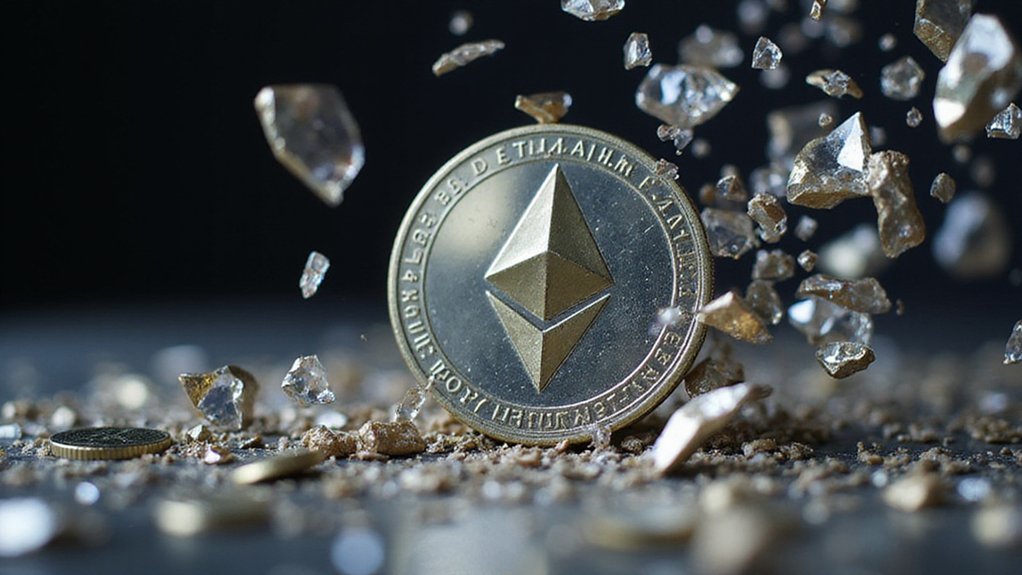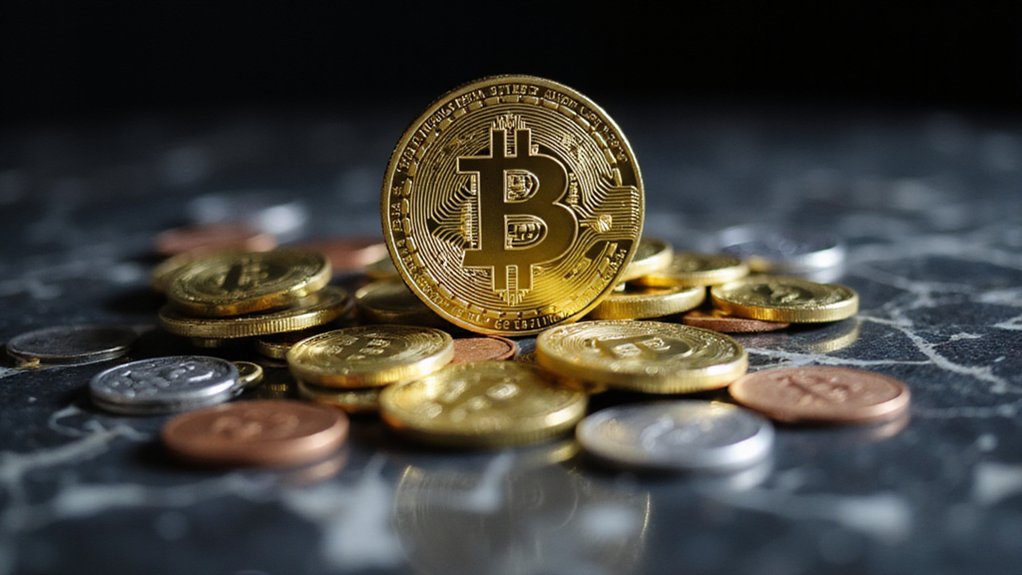While Ethereum‘s journey from an $18 million initial coin offering to a $300 billion blockchain colossus might seem like another cryptocurrency success story, the network’s evolution into what can only be described as a decentralized empire represents something far more consequential than mere price appreciation.
The statistics paint a compelling portrait of digital dominance: over 3,000 decentralized applications sprawl across Ethereum’s infrastructure, processing 1.2 million daily transactions—five times more than its nearest competitor. This isn’t merely network activity; it’s the pulse of an emerging financial ecosystem that has captured 62% of global decentralized finance‘s total value locked.
Ethereum commands 62% of global DeFi value, processing five times more daily transactions than any competing blockchain network.
Ethereum’s imperial expansion accelerated dramatically following 2022’s “Merge,” a technical metamorphosis that abandoned energy-intensive proof-of-work mining for proof-of-stake validation, reducing energy consumption by 99%. The change, coupled with ongoing upgrades targeting thousands of transactions per second, positions the network for what analysts anticipate could be a pivotal 2025 bull market resurgence—potentially driving ETH toward the psychologically significant $10,000 threshold.
Yet empires face challengers, and Ethereum’s dominance confronts increasingly sophisticated competition. Solana offers faster transaction speeds and lower fees, while other altcoins boast innovative tokenomics and specialized utility in gaming, payments, and fitness applications. The altcoin market’s gradual decoupling from Ethereum creates independent price movements that challenge the network’s gravitational pull over digital assets. Despite recent market turbulence that saw ETH drop to USD 1,385 during April 2025’s economic shockwaves, the network’s fundamental infrastructure continues to demonstrate resilience.
Institutional adoption provides the empire’s most compelling validation. BlackRock‘s growing interest in Ethereum infrastructure, combined with expanding tokenization of traditional assets and the proliferation of Ethereum ETFs, reinforces the network’s role as Web3’s foundational platform. Projects like Ozak AI, which integrates artificial intelligence with Ethereum smart contracts, demonstrate the network’s continued innovation capacity. Advanced projects utilizing machine learning models are now providing near real-time market insights through decentralized infrastructure networks.
The implementation of EIP-4844 (“Proto-Danksharding”) promises further scalability improvements, addressing persistent throughput concerns. Despite price volatility that saw ETH fluctuate near $2,600 after a prolonged downtrend since 2021, ecosystem activity remains remarkably robust. With Ethereum maintaining its position as the second largest cryptocurrency by market cap at $220 billion, the network continues to attract developers building decentralized applications across its platform.
Ethereum’s evolution transcends technological achievement—it represents the construction of a parallel financial infrastructure. Whether this digital empire maintains its dominance amid intensifying competition will likely determine not just Ethereum’s trajectory, but the broader architecture of decentralized finance itself.








